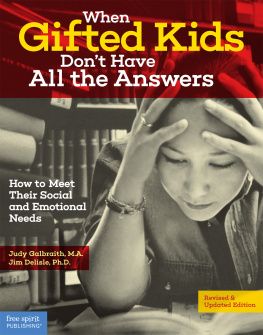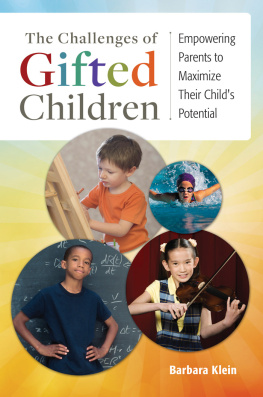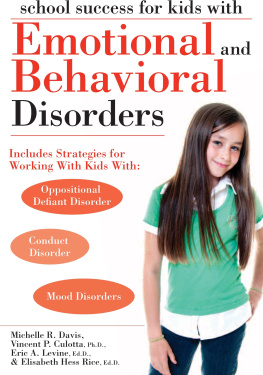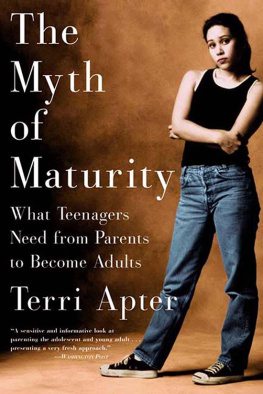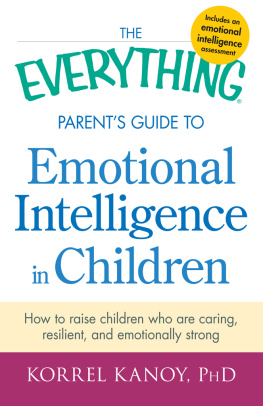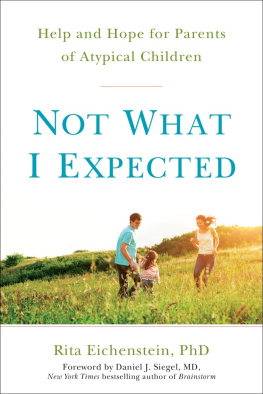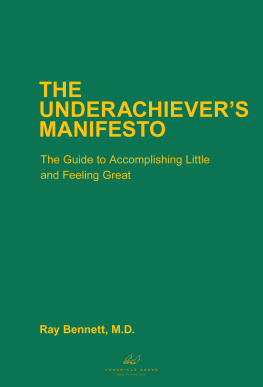Peter Spevak - Empowering Underachievers: New Strategies to Guide Kids (8-18) to Personal Excellence
Here you can read online Peter Spevak - Empowering Underachievers: New Strategies to Guide Kids (8-18) to Personal Excellence full text of the book (entire story) in english for free. Download pdf and epub, get meaning, cover and reviews about this ebook. year: 2010, publisher: New Horizon Press, genre: Home and family. Description of the work, (preface) as well as reviews are available. Best literature library LitArk.com created for fans of good reading and offers a wide selection of genres:
Romance novel
Science fiction
Adventure
Detective
Science
History
Home and family
Prose
Art
Politics
Computer
Non-fiction
Religion
Business
Children
Humor
Choose a favorite category and find really read worthwhile books. Enjoy immersion in the world of imagination, feel the emotions of the characters or learn something new for yourself, make an fascinating discovery.

- Book:Empowering Underachievers: New Strategies to Guide Kids (8-18) to Personal Excellence
- Author:
- Publisher:New Horizon Press
- Genre:
- Year:2010
- Rating:4 / 5
- Favourites:Add to favourites
- Your mark:
Empowering Underachievers: New Strategies to Guide Kids (8-18) to Personal Excellence: summary, description and annotation
We offer to read an annotation, description, summary or preface (depends on what the author of the book "Empowering Underachievers: New Strategies to Guide Kids (8-18) to Personal Excellence" wrote himself). If you haven't found the necessary information about the book — write in the comments, we will try to find it.
My child is so bright, why isnt she doing better in school? Does she want to fail? parents ask. Peter A. Spevak, Ph.D., who has brought 2000 students from failure to success and is an often called upon expert on Good Morning America and contributor to Parents Magazine and the New York Times, explains that lack of emotional maturity is often the main problem in dealing with children who suffer from low self-esteem, poor self-confidence and are labeled underachievers. Parents and educators must actively engage underachievers in a transformation to become self-motivated and happy individuals. How can underachievers by motivated? First, you must understand the relationship between emotional maturity and chronological age. Dr. Spevak warns readers about accepting a diagnosis of ADD or ADHP being made too quickly. He focuses on the four emotional developmental stagesdistant, passive, dependent, and defiantexplaining and demonstrating through examples how each type needs specific interventions and actions to get unstuck and stop the backsliding that results in failure. He shows the reader how to encourage emotional growth in a child, enabling him or her to become empowered and thus achievers. Spevak skillfully blends theory, explaining the problem, with a practical, doable action plan for solving the problem.
- New ways to understand and empower failing children.
- How to guide an underachiever to personal excellence.
About the Authors:
Peter A. Spevak, Ph.D., Founder & Director of the Center for Applied Motivation in Washington D.C., has appeared on Good Morning America and Dateline and has been featured in the New York Times, Boston Globe, Forbes, Wall Street Journal, Washington Post, Newsweek and the LA Times. He received his MA and Ph.D. in clinical psychology from the University of Missouri-Columbia.
Maryann Karinch, a communications consultant in San Mateo, CA, and author of Lessons From the Edge, Boot Camp, and Telemedicine, holds an MA degree from Catholic University of America.
Peter Spevak: author's other books
Who wrote Empowering Underachievers: New Strategies to Guide Kids (8-18) to Personal Excellence? Find out the surname, the name of the author of the book and a list of all author's works by series.

